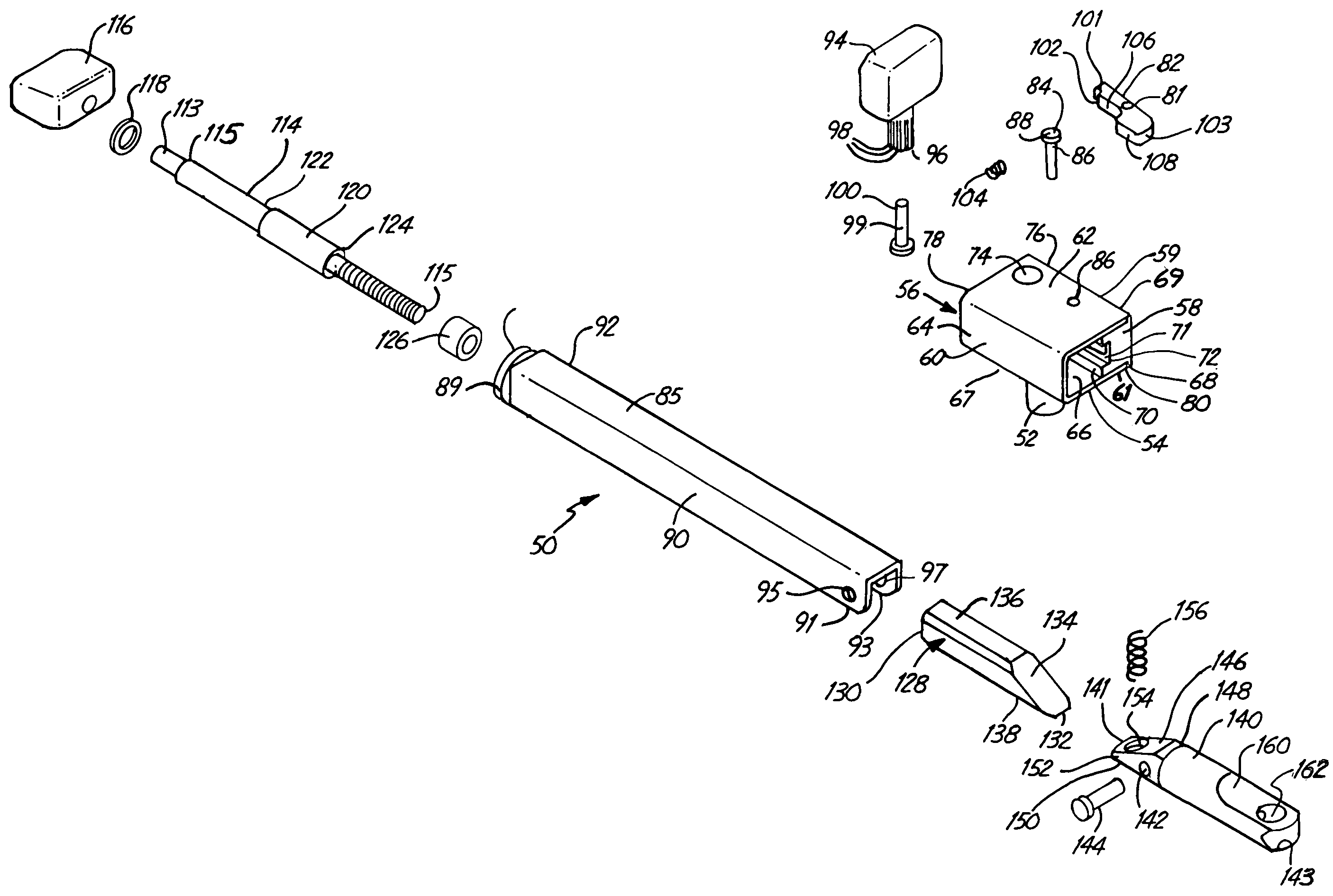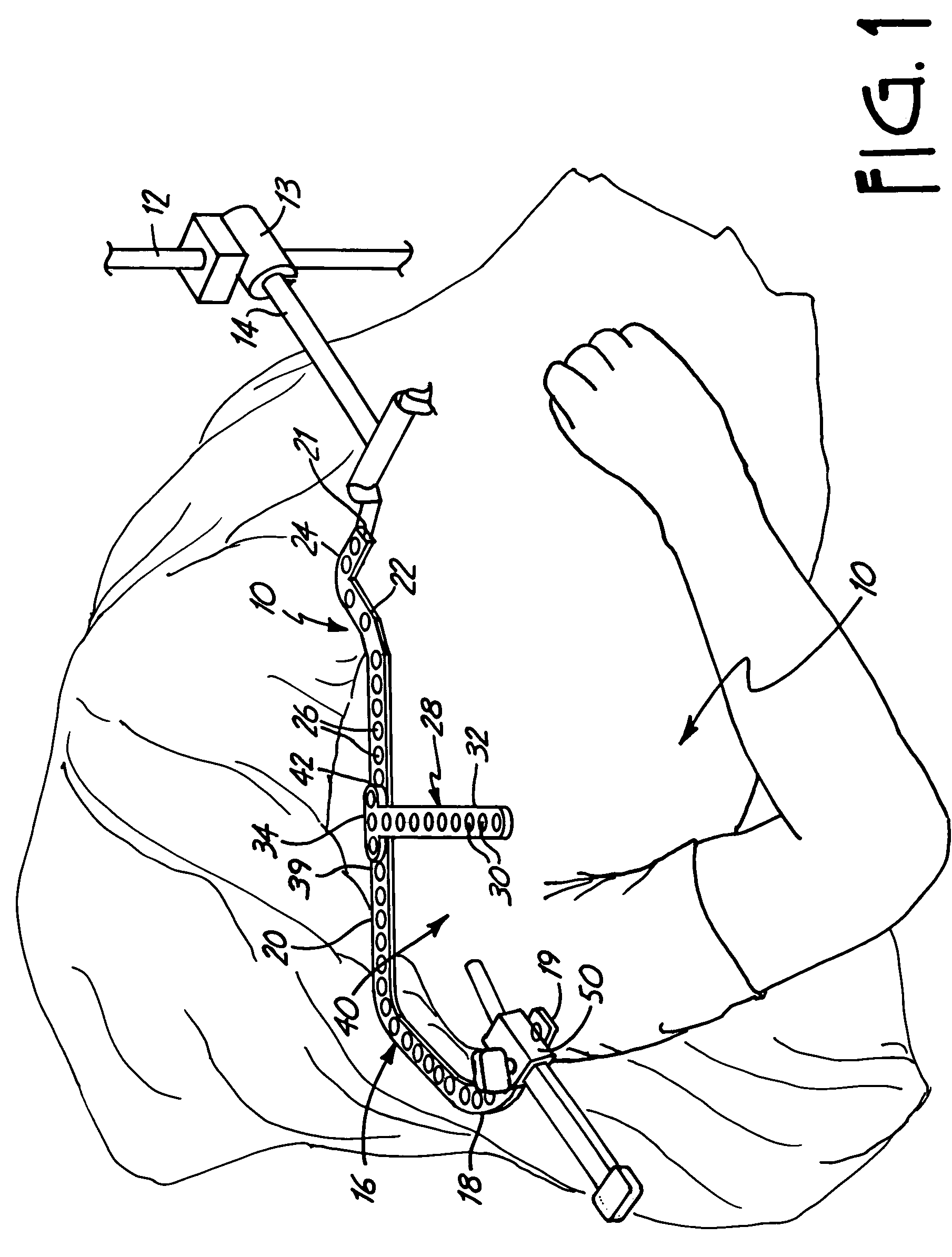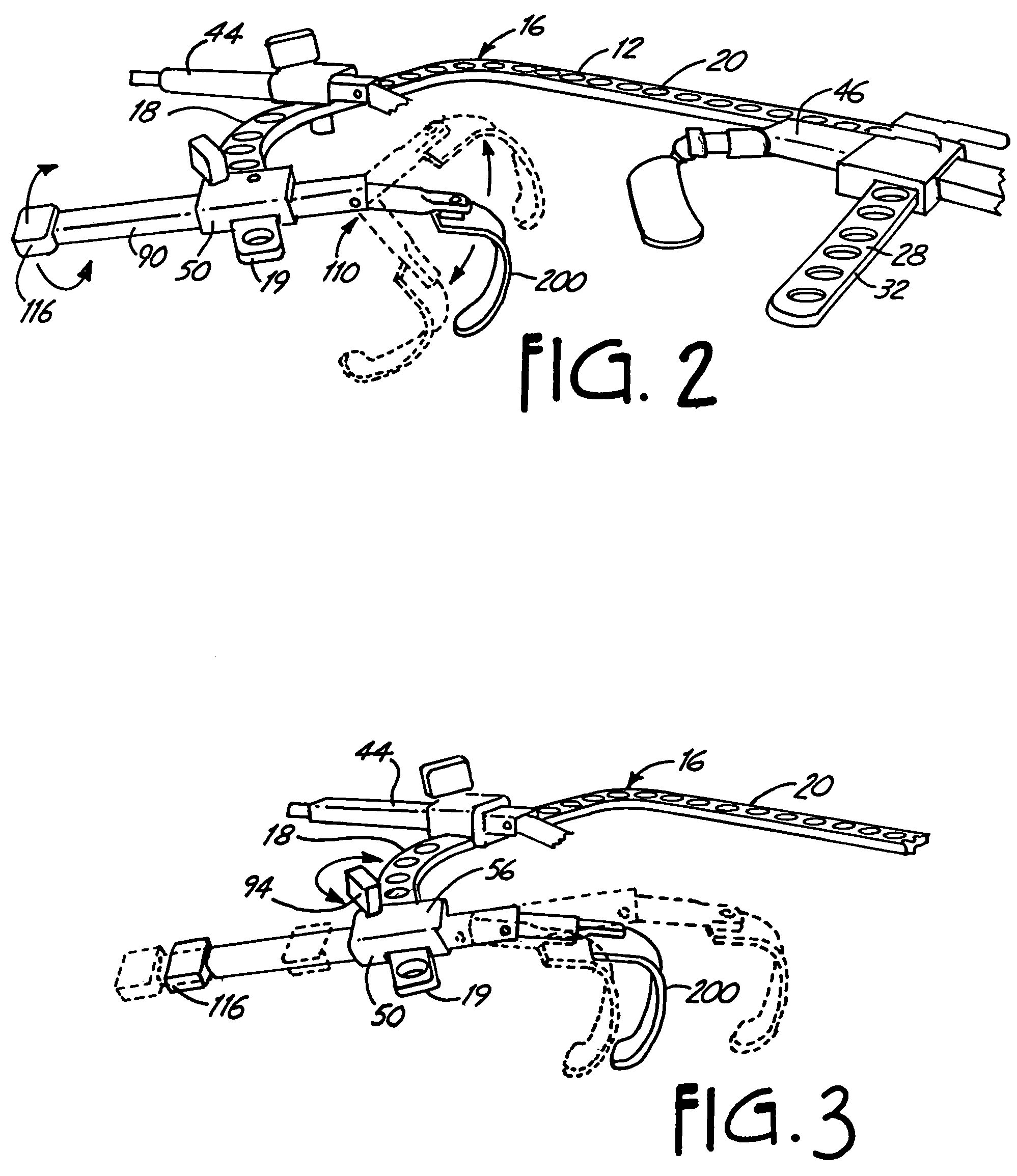Method for humerus retraction
a humerus and lumbar joint technology, applied in the field of surgical retraction, can solve the problems of pain when the shoulder joint is articulated, limited access to the surgical site, and the surgical procedure can become quite physically taxing on the surgeon or surgeons performing the surgery
- Summary
- Abstract
- Description
- Claims
- Application Information
AI Technical Summary
Problems solved by technology
Method used
Image
Examples
Embodiment Construction
[0020]The present invention relates to a method for retracting the upper arm or humerus bone during a shoulder surgery as generally illustrated in FIG. 1 at 10. In preparation for a shoulder replacement surgery, a height of a generally J-shaped member 16 is adjusted by clamping the support member 14 in a selected position on a retractor support apparatus 12 with a clamp 13.
[0021]To provide adequate support around the shoulder while maintaining access to the shoulder to be operated upon, the generally J-shaped member 16 is attached to the support member 14 as illustrated in FIG. 1. The generally J-shaped member 16 includes an arcuate portion 18 proximate a first end 19, a substantially straight middle portion 20 and an outwardly extending portion 22 proximate a second end 21. An engaging portion 24 which engages the support member 14 is positioned substantially perpendicular to the outwardly extending portion 22. The engaging portion 24 is designed to engage the docking member disclo...
PUM
 Login to View More
Login to View More Abstract
Description
Claims
Application Information
 Login to View More
Login to View More - R&D
- Intellectual Property
- Life Sciences
- Materials
- Tech Scout
- Unparalleled Data Quality
- Higher Quality Content
- 60% Fewer Hallucinations
Browse by: Latest US Patents, China's latest patents, Technical Efficacy Thesaurus, Application Domain, Technology Topic, Popular Technical Reports.
© 2025 PatSnap. All rights reserved.Legal|Privacy policy|Modern Slavery Act Transparency Statement|Sitemap|About US| Contact US: help@patsnap.com



